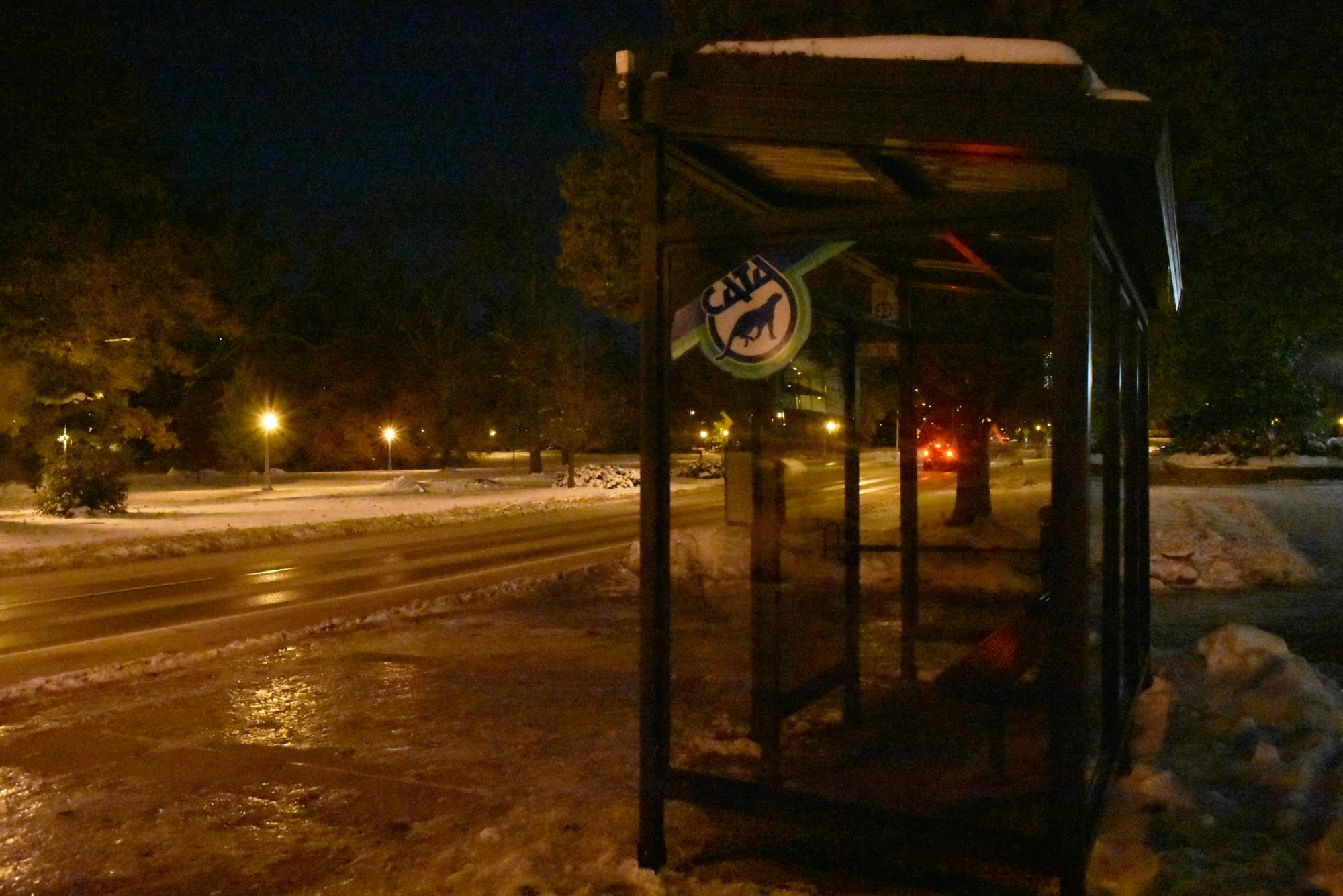From neighborhood to neighborhood on Michigan State's campus, the poorly-lit parts of campus leave some students concerned for their safety at night.
Due to daylight savings time, it gets darker earlier — sometimes as early as 6 p.m. This means more students have to walk back from their later classes in the dark.
“There’s a lot of stuff that goes into it. With lighting comes shadows, and that creates opportunities for people who want to cause crime to hide in those shadows,” Ethan Jodoin, environmental studies and sustainability senior, said. “With certainly colors as well ... that can distort your color perception, as well. So, say someone is wearing a maroon jacket. In that light, it might look brown, so then when they report it later, they are looking for someone in a brown jacket.”
Jodoin said females and members of the LGBTQ community are among those who are most vulnerable while walking around these areas after dark.
Environmental studies and sustainability senior Alexa Marsh said she tries not to walk alone in the dark to avoid dangers such as kidnaping, harassment and sexual assault.
“I try to avoid dark areas if I can,” Marsh wrote in an email. “However, if they are inevitable, I ensure that I do not have my headphones on so I can hear my surroundings. Also, sometimes, I will call someone to keep me company, know where I am and take action if needed. Mostly, I try to be as aware of my surroundings as possible.”
Outside of crime, the darker areas pose other risks for students who have to walk or stand at bus stops at night.
The lack of light at bus stops can cause bus drivers to drive past students, which is especially dangerous on cold winter nights, Jodoin said.
Marsh and Jodoin are a part of Sustainable Spartans, a student group that won a $25,000 grant to install solar-powered lights at bus stops on campus.
One of the reasons the student group launched the project was to address the dark bus stops and the dangers surrounding them.
“The project is coming along,” Marsh wrote. “We just ordered our first light, so we hope to have that installed in the next few weeks. Keep on the lookout for more solar panels popping up at bus shelters around campus. We hope this will make students waiting in bus shelters feel safer when it is dark out. We also hope that this lighting will deter people from committing crimes or putting others in danger.”
MSU has been proactive in addressing these concerns, from providing alternatives to walking at night, like ASMSU’s Safe Ride Program, to pushing an initiative to add LED lights to darker areas.
“I know MSU is working on a lighting initiative to replace street lights with LEDs which would be brighter and (more light) than the light they have going on right now,” Jodoin said. “So I know that they are working on it and I think they should continue those efforts and really just focus on making sure that there aren’t a lot of dark spots on campus.”
Despite this, students like journalism freshman Marvin Pride believe more should be done to protect students until the LED lights are implemented.
“Definitely reach out to the students more to see what areas they think could be lit more and take that into consideration because the students matter here,” Pride said. “Also, implement lighting, talk to the city of East Lansing and see what they could do, or even just have the police patrol that area."
Marsh said she advises students walking around at night to be aware of their surroundings and prepare for unsafe situations.
“Always be aware of your surroundings,” Marsh wrote. “If you are listening to music, only keep one earbud in so that you can hear around you. Try your best to walk in well-lit, populated areas and always have an escape route in mind as you are walking.”
Support student media!
Please consider donating to The State News and help fund the future of journalism.
Discussion
Share and discuss “Lack of lighting on MSU's campus at night causes concern for students” on social media.






